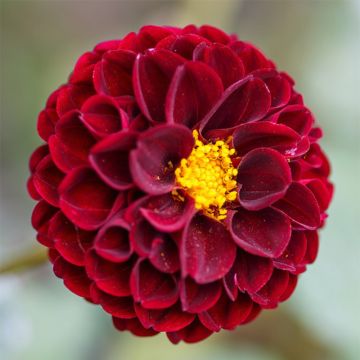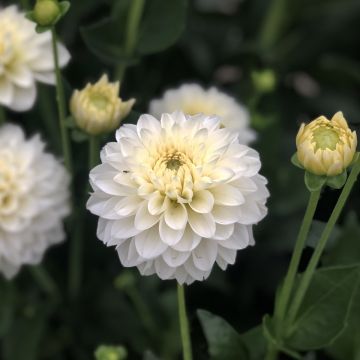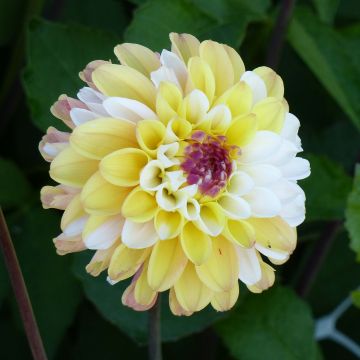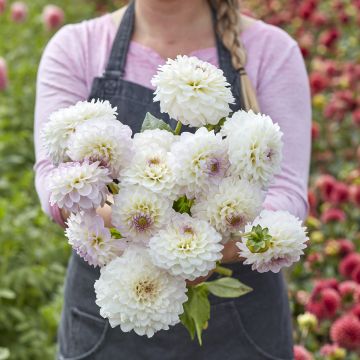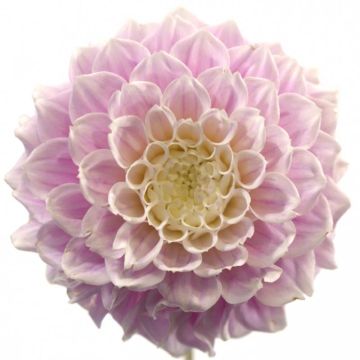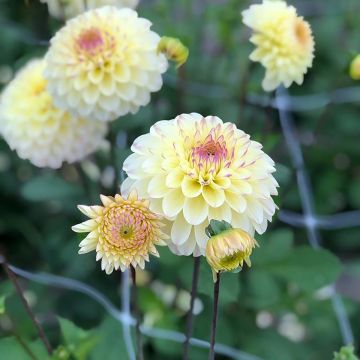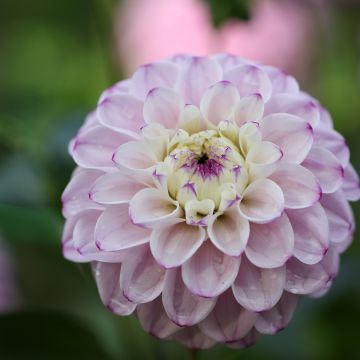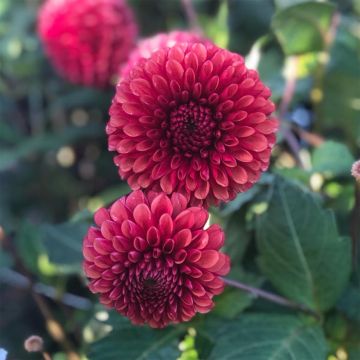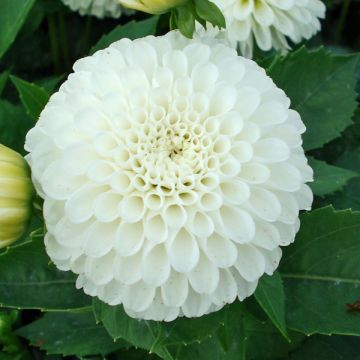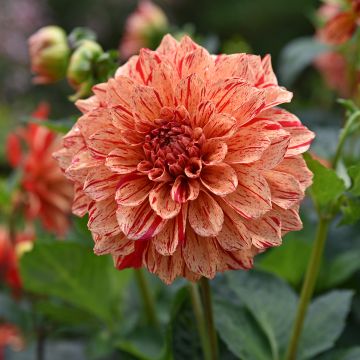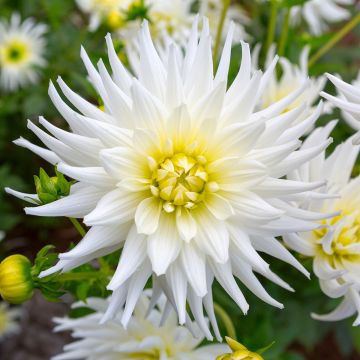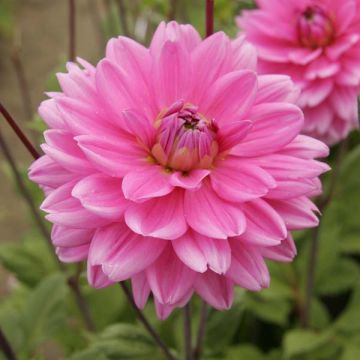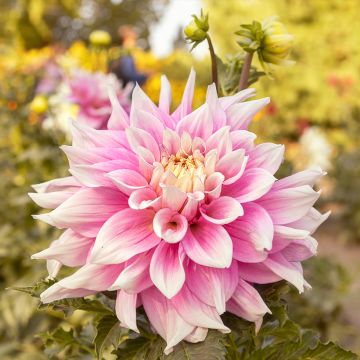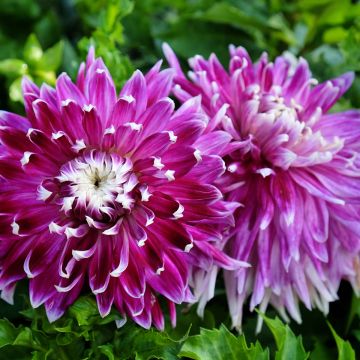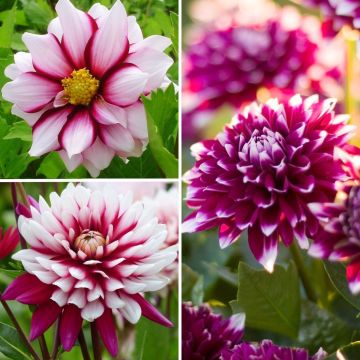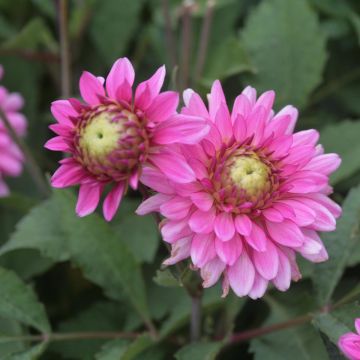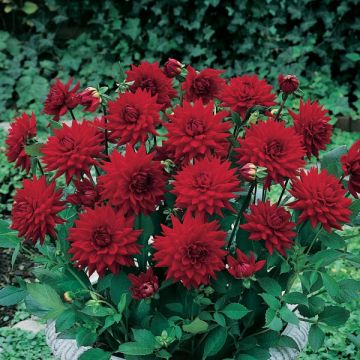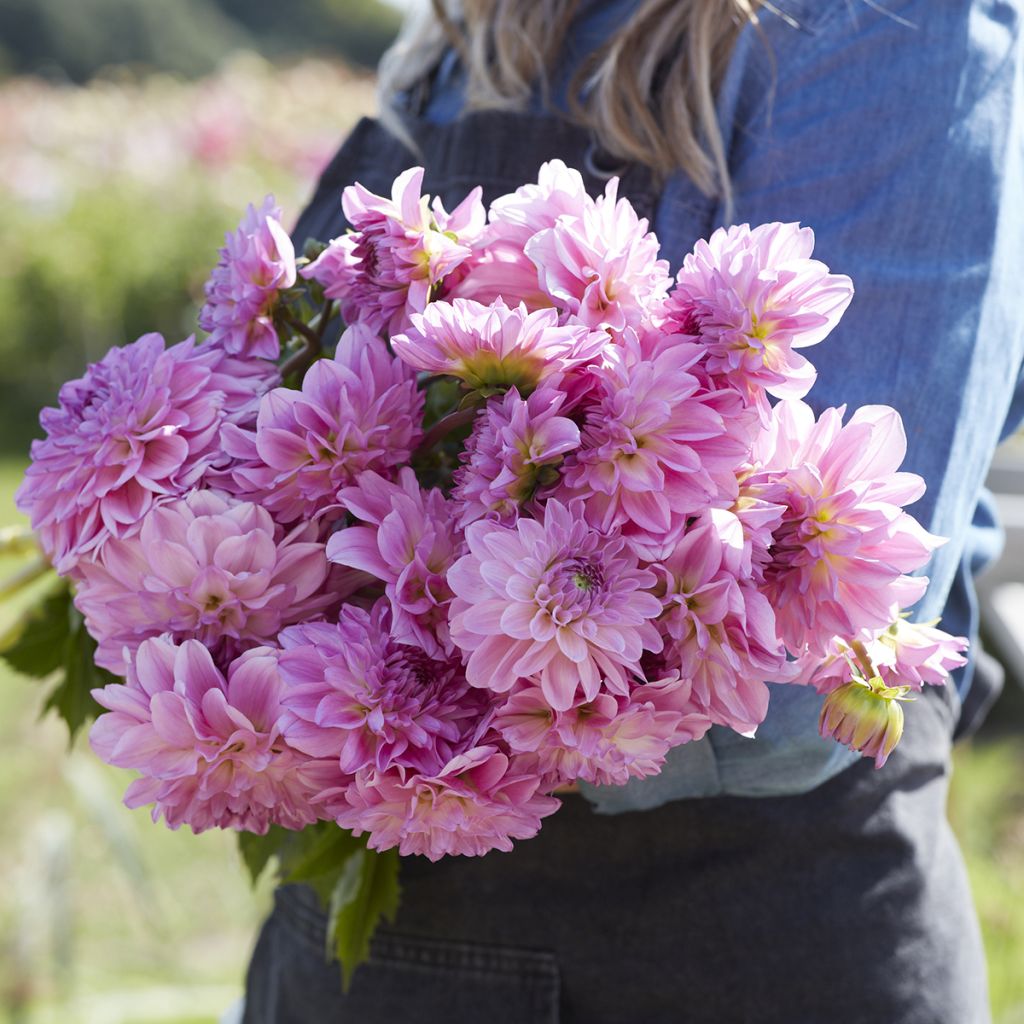

Dahlia Pink Ardour
Dahlia Pink Ardour
Dahlia Pink Ardour
Dahlia
This item cannot be shipped to the selected country
Delivery charge from €5.90
More information
Schedule delivery date,
and select date in basket
This plant carries a 6 months recovery warranty
More information
We guarantee the quality of our plants for a full growing cycle, and will replace at our expense any plant that fails to recover under normal climatic and planting conditions.
From €5.90 for pickup delivery and €6.90 for home delivery
Express home delivery from €8.90.
Does this plant fit my garden?
Set up your Plantfit profile →
Description
The ball Dahlia 'Pink Ardour' offers dense pompom flowers with a diameter of 10cm (4in) that bloom all summer. They have a gradient of pale violet pink to a deeper violet at the heart of the flower. Easy to cultivate, this beautiful shrub will find its place in a flower bed or in the vegetable garden and its flowers will allow you to create soft bouquets.
From the Asteraceae family, dahlias are plants with tubers originating from the high plateaus of Mexico. Currently, there are thousands of horticultural varieties that have conquered gardens around the world. Dahlias are classified according to the shape of their flowers. The 'Pink Ardour' variety belongs to the decorative dahlias with ball-shaped flowers. The flowers are head-like without a visible centre, and composed of numerous ligules arranged regularly and completely rolled up on themselves, even tubular. We distinguish between pompom dahlias (diameter less than 6cm (2in)) and balls (diameter greater than 6cm (2in)). The flowering of the 'Pink Ardour' dahlia extends from July until the first frost. It has a bushy and erect habit and the hollow stems are always a little fragile in windy conditions. Its deciduous, green leaves are divided into 3 or 5 dentate lobes.
To prolong the flowering, regularly remove faded flowers. Don't wait until they are fully faded, cut them when the bud starts to open to make bouquets full of softness. In the garden or in the vegetable garden, this dahlia has its rightful place. Alone or in a flower bed, it will bring delicacy to your compositions. Combine the 'Pink Ardour' dahlia with 'Mick's Peppermint' semi-cactus dahlia with white flowers speckled with purple, with the 'Radegast' decorative dahlia with bicoloured flowers, white and purple, or with the 'Franz Kafka' pompom dahlia with mauve flowers.
Popular plants in cottage gardens and flowered vegetable gardens, single-flowered dahlias go well with Gauras and Cleomes that have a lighter appearance. Also consider Echinaceas and Salvia jamensis 'Raspberry Royal' with purple flowers.
Report an error about the product description
Plant habit
Flowering
Foliage
Botanical data
Dahlia
Pink Ardour
Asteraceae
Dahlia
Cultivar or hybrid
Other Pom-pom Dahlias
Planting and care
The 'Pink Ardour' Ball Dahlia is easy to grow in all regions. Here are some simple rules to follow to enjoy its beautiful and generous flowering. Plant the tubers in the sun after the last frost. A rich, moist, and well-drained soil will be greatly appreciated. Avoid any stagnant moisture that promotes tuber rot. Amend your soil with compost (in case of poor soil) and sand (for drainage) if necessary. Work your soil deeply and enrich it with crushed horn or dehydrated blood, whichever you prefer. Place your tuber and crumble the soil around it to fill any air pockets. Your dahlia should be covered with about 6cm (2in) of soil. Water generously at planting and regularly during the first six weeks to aid in rooting.
Dahlias are sensitive to cold, so they need to be overwintered. In November, the first frost blackens the foliage, it's time to dig them up. Carefully unearth the tubers. Remove as much soil as possible. Let the foliage dry so that the tubers can replenish their reserves. Then cut the stems to 10cm (4in). Spread your tubers in a box on newspaper. Store them in a frost-free, dry, cool, and dark place, such as a garage or attic. In southern regions, close to the coast, experiencing very few frosty days per year, it is possible to leave them in place. In this case, simply cover the ground with a thick layer of mulch (leaves, straw, etc.).
Pinch the stems early (from the 3rd or 4th week after planting) to make your dahlia more compact and branched, and therefore more resistant to bad weather (wind, rain). To do this, use your nails to cut the terminal shoots just above the previous leaves. Otherwise, you can always use stakes, but the aesthetic result may not be the best taste.
Slugs and snails are very fond of these young shoots. Protect them!
Planting period
Intended location
Care
This item has not been reviewed yet - be the first to leave a review about it.
Dahlias
Haven't found what you were looking for?
Hardiness is the lowest winter temperature a plant can endure without suffering serious damage or even dying. However, hardiness is affected by location (a sheltered area, such as a patio), protection (winter cover) and soil type (hardiness is improved by well-drained soil).

Photo Sharing Terms & Conditions
In order to encourage gardeners to interact and share their experiences, Promesse de fleurs offers various media enabling content to be uploaded onto its Site - in particular via the ‘Photo sharing’ module.
The User agrees to refrain from:
- Posting any content that is illegal, prejudicial, insulting, racist, inciteful to hatred, revisionist, contrary to public decency, that infringes on privacy or on the privacy rights of third parties, in particular the publicity rights of persons and goods, intellectual property rights, or the right to privacy.
- Submitting content on behalf of a third party;
- Impersonate the identity of a third party and/or publish any personal information about a third party;
In general, the User undertakes to refrain from any unethical behaviour.
All Content (in particular text, comments, files, images, photos, videos, creative works, etc.), which may be subject to property or intellectual property rights, image or other private rights, shall remain the property of the User, subject to the limited rights granted by the terms of the licence granted by Promesse de fleurs as stated below. Users are at liberty to publish or not to publish such Content on the Site, notably via the ‘Photo Sharing’ facility, and accept that this Content shall be made public and freely accessible, notably on the Internet.
Users further acknowledge, undertake to have ,and guarantee that they hold all necessary rights and permissions to publish such material on the Site, in particular with regard to the legislation in force pertaining to any privacy, property, intellectual property, image, or contractual rights, or rights of any other nature. By publishing such Content on the Site, Users acknowledge accepting full liability as publishers of the Content within the meaning of the law, and grant Promesse de fleurs, free of charge, an inclusive, worldwide licence for the said Content for the entire duration of its publication, including all reproduction, representation, up/downloading, displaying, performing, transmission, and storage rights.
Users also grant permission for their name to be linked to the Content and accept that this link may not always be made available.
By engaging in posting material, Users consent to their Content becoming automatically accessible on the Internet, in particular on other sites and/or blogs and/or web pages of the Promesse de fleurs site, including in particular social pages and the Promesse de fleurs catalogue.
Users may secure the removal of entrusted content free of charge by issuing a simple request via our contact form.
The flowering period indicated on our website applies to countries and regions located in USDA zone 8 (France, the United Kingdom, Ireland, the Netherlands, etc.)
It will vary according to where you live:
- In zones 9 to 10 (Italy, Spain, Greece, etc.), flowering will occur about 2 to 4 weeks earlier.
- In zones 6 to 7 (Germany, Poland, Slovenia, and lower mountainous regions), flowering will be delayed by 2 to 3 weeks.
- In zone 5 (Central Europe, Scandinavia), blooming will be delayed by 3 to 5 weeks.
In temperate climates, pruning of spring-flowering shrubs (forsythia, spireas, etc.) should be done just after flowering.
Pruning of summer-flowering shrubs (Indian Lilac, Perovskia, etc.) can be done in winter or spring.
In cold regions as well as with frost-sensitive plants, avoid pruning too early when severe frosts may still occur.
The planting period indicated on our website applies to countries and regions located in USDA zone 8 (France, United Kingdom, Ireland, Netherlands).
It will vary according to where you live:
- In Mediterranean zones (Marseille, Madrid, Milan, etc.), autumn and winter are the best planting periods.
- In continental zones (Strasbourg, Munich, Vienna, etc.), delay planting by 2 to 3 weeks in spring and bring it forward by 2 to 4 weeks in autumn.
- In mountainous regions (the Alps, Pyrenees, Carpathians, etc.), it is best to plant in late spring (May-June) or late summer (August-September).
The harvesting period indicated on our website applies to countries and regions in USDA zone 8 (France, England, Ireland, the Netherlands).
In colder areas (Scandinavia, Poland, Austria...) fruit and vegetable harvests are likely to be delayed by 3-4 weeks.
In warmer areas (Italy, Spain, Greece, etc.), harvesting will probably take place earlier, depending on weather conditions.
The sowing periods indicated on our website apply to countries and regions within USDA Zone 8 (France, UK, Ireland, Netherlands).
In colder areas (Scandinavia, Poland, Austria...), delay any outdoor sowing by 3-4 weeks, or sow under glass.
In warmer climes (Italy, Spain, Greece, etc.), bring outdoor sowing forward by a few weeks.

































